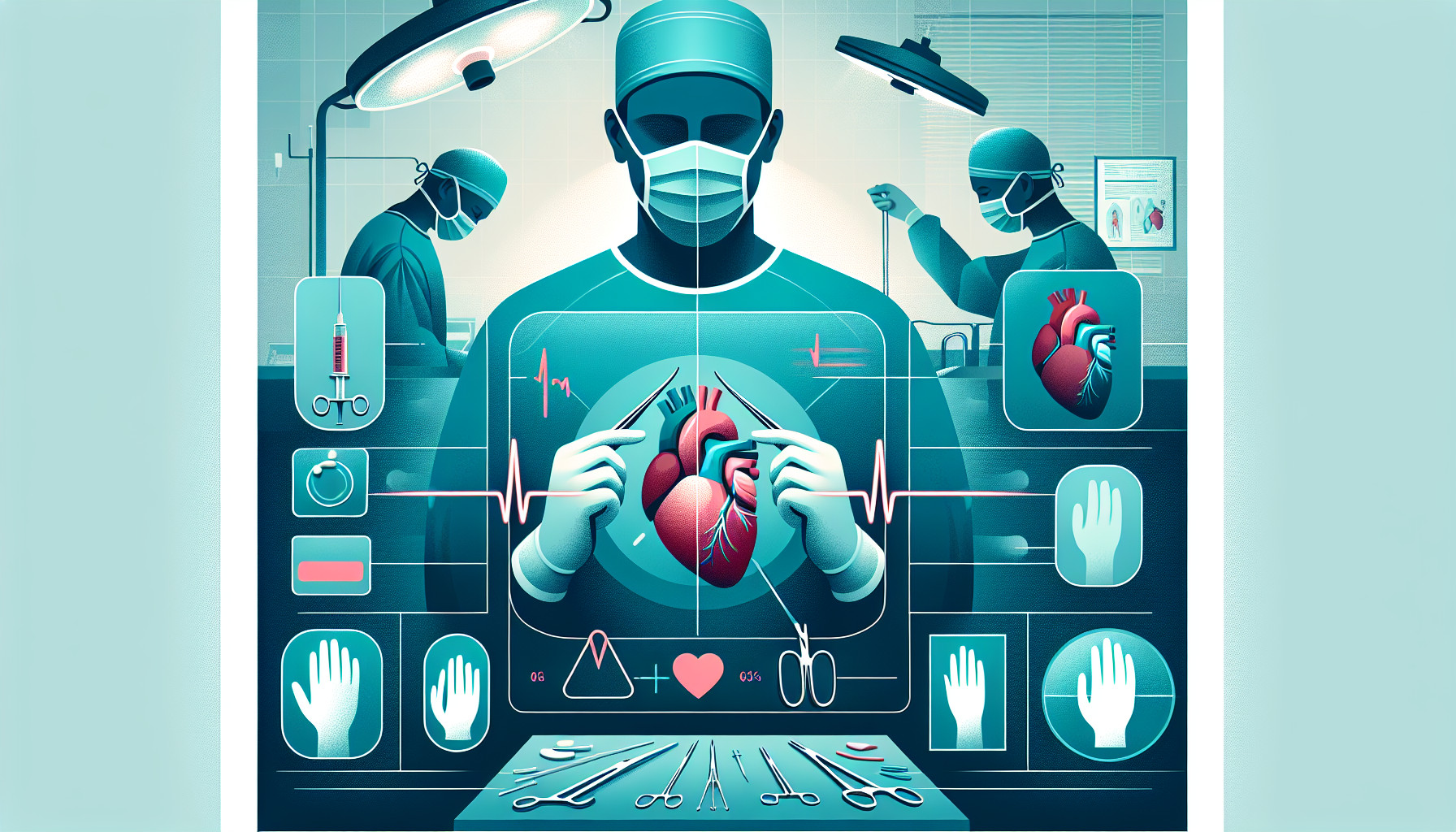Our Summary
This study looked at how the process of obtaining hearts for transplant from donors who also donated their lungs affects the survival rates of people who receive these hearts. The researchers studied heart transplant patients from one medical center from 2010 to 2022. They looked at the survival rates after 30 days, 3 months, 1 year, and 3 years, along with problems that happened within the first year.
The study included 253 heart transplant recipients, most of them men, with an average age of 55. Most of these patients (72.7%) received hearts from donors who also donated their lungs, while the rest (27.3%) received hearts from donors who only donated their hearts. The average age of the combined heart and lung donors was slightly younger than the heart-only donors.
The study found that patients who received hearts from donors who also donated their lungs didn’t have higher death rates or face more health issues in the first year after surgery. In fact, these patients even had better survival rates in the first 30 days after the transplant.
In conclusion, the study suggests that taking hearts for transplant from donors who also donate their lungs doesn’t lead to worse outcomes for the heart recipients. In fact, these hearts may even lead to better outcomes.
FAQs
- Does obtaining hearts for transplant from donors who also donated their lungs affect the survival rates of heart transplant recipients?
- What were the health outcomes for patients who received hearts from donors who also donated their lungs within the first year after surgery?
- Is there a difference in survival rates between patients who received hearts from donors who only donated their hearts and those who received hearts from donors who also donated their lungs?
Doctor’s Tip
A doctor might tell a patient that receiving a heart from a donor who also donated their lungs does not increase the risk of complications or decrease survival rates after a heart transplant. In fact, patients who receive these hearts may even have better outcomes in the first 30 days after surgery. It is important to trust in the transplant process and follow all post-transplant care instructions to ensure a successful recovery.
Suitable For
Patients who are typically recommended for a heart transplant are those with end-stage heart failure that cannot be managed with other treatments such as medication, lifestyle changes, or surgery. These patients may have conditions such as coronary artery disease, cardiomyopathy, congenital heart defects, or valvular heart disease. They may also have severe symptoms such as shortness of breath, fatigue, chest pain, or fluid retention.
In addition, patients being considered for a heart transplant must meet certain criteria, including being healthy enough to undergo surgery and the post-transplant care required to maintain the new heart. They must also have a strong support system in place to help them during the recovery process.
Overall, heart transplant is a life-saving treatment option for patients with end-stage heart failure who have exhausted other treatment options and meet the necessary criteria for the procedure.
Timeline
Before heart transplant:
- Patient is diagnosed with end-stage heart failure and is evaluated by a transplant team.
- Patient undergoes a series of tests, including blood tests, imaging tests, and psychological evaluations to determine if they are a suitable candidate for a heart transplant.
- Patient is placed on the waiting list for a donor heart.
- Patient waits for a suitable donor heart to become available, which can take weeks to months.
- Once a donor heart is found, patient undergoes surgery to receive the new heart.
After heart transplant:
- Patient is closely monitored in the hospital for any signs of rejection or complications.
- Patient takes immunosuppressant medications to prevent rejection of the new heart.
- Patient undergoes regular follow-up appointments, tests, and biopsies to monitor the health of the new heart.
- Patient undergoes cardiac rehabilitation to help recover and regain strength after surgery.
- Patient adjusts to life with a new heart, including making lifestyle changes and taking medications as prescribed.
- Patient may experience improvements in symptoms and quality of life, as well as potential complications such as rejection, infection, or side effects from medications.
What to Ask Your Doctor
- What is the success rate of heart transplants from donors who also donated their lungs compared to donors who only donated their hearts?
- Are there any specific risks or complications associated with receiving a heart from a donor who also donated their lungs?
- How will the donor’s lung donation impact the recovery process and long-term outcomes for the heart transplant recipient?
- Will the donor’s lung donation have any impact on the compatibility of the heart for transplant?
- How does the donor’s lung donation affect the overall quality of the heart being transplanted?
- Are there any specific considerations or precautions that need to be taken for patients receiving hearts from donors who also donated their lungs?
- What is the average survival rate for heart transplant recipients who received hearts from donors who also donated their lungs in the long term?
- How does the age of the donor (combined heart and lung donors vs. heart-only donors) impact the success of the heart transplant surgery?
- Are there any ongoing research or studies being conducted on the outcomes of heart transplants from donors who also donated their lungs?
- How can I ensure the best possible outcome for my heart transplant surgery if I receive a heart from a donor who also donated their lungs?
Reference
Authors: Jenkins FS, Boettger C, Immohr MB, Akhyari P, Aubin H, Tudorache I, Sigetti D, Oehler D, Lichtenberg A, Boeken U. Journal: Exp Clin Transplant. 2023 Aug;21(8):678-683. doi: 10.6002/ect.2023.0151. PMID: 37698403
